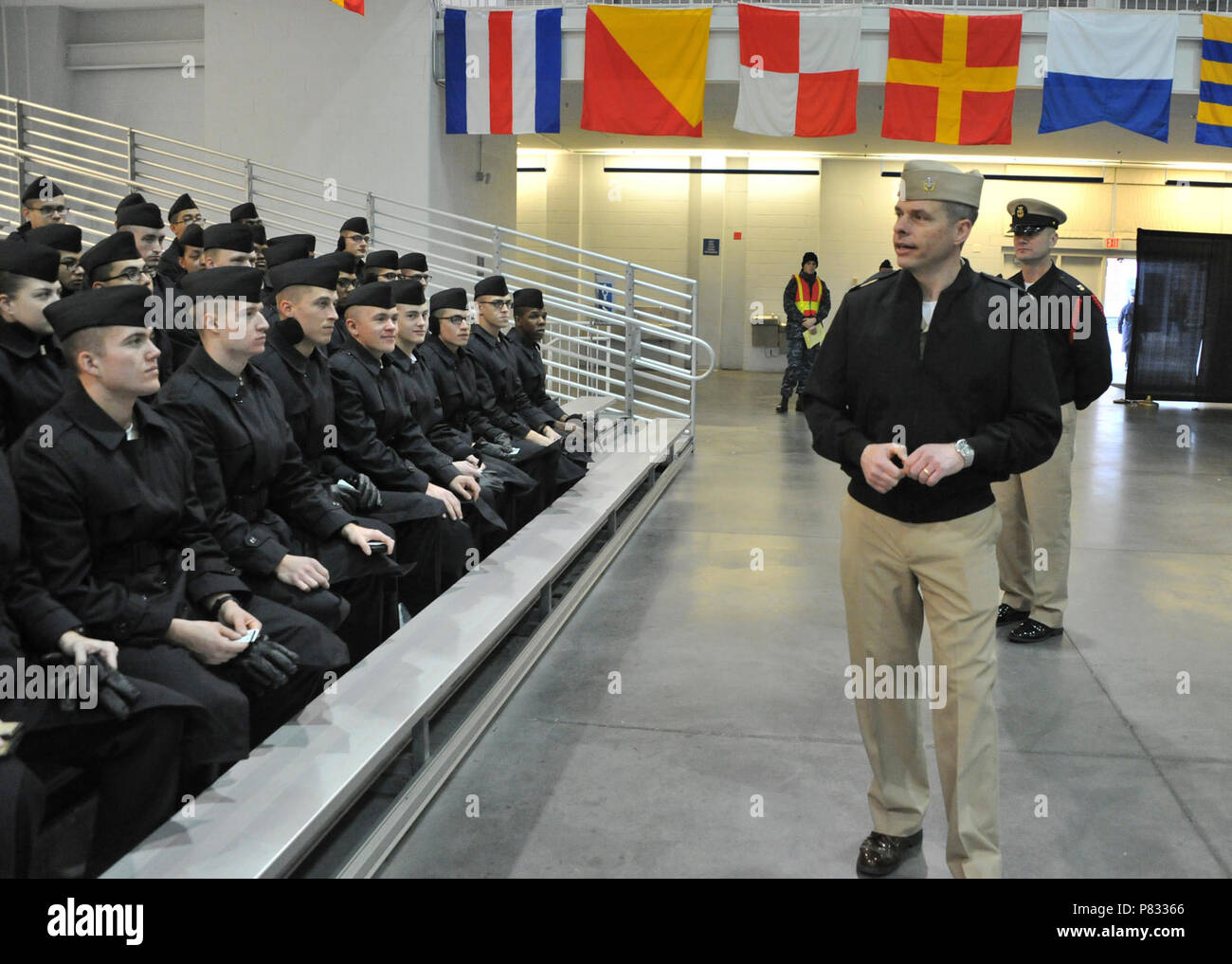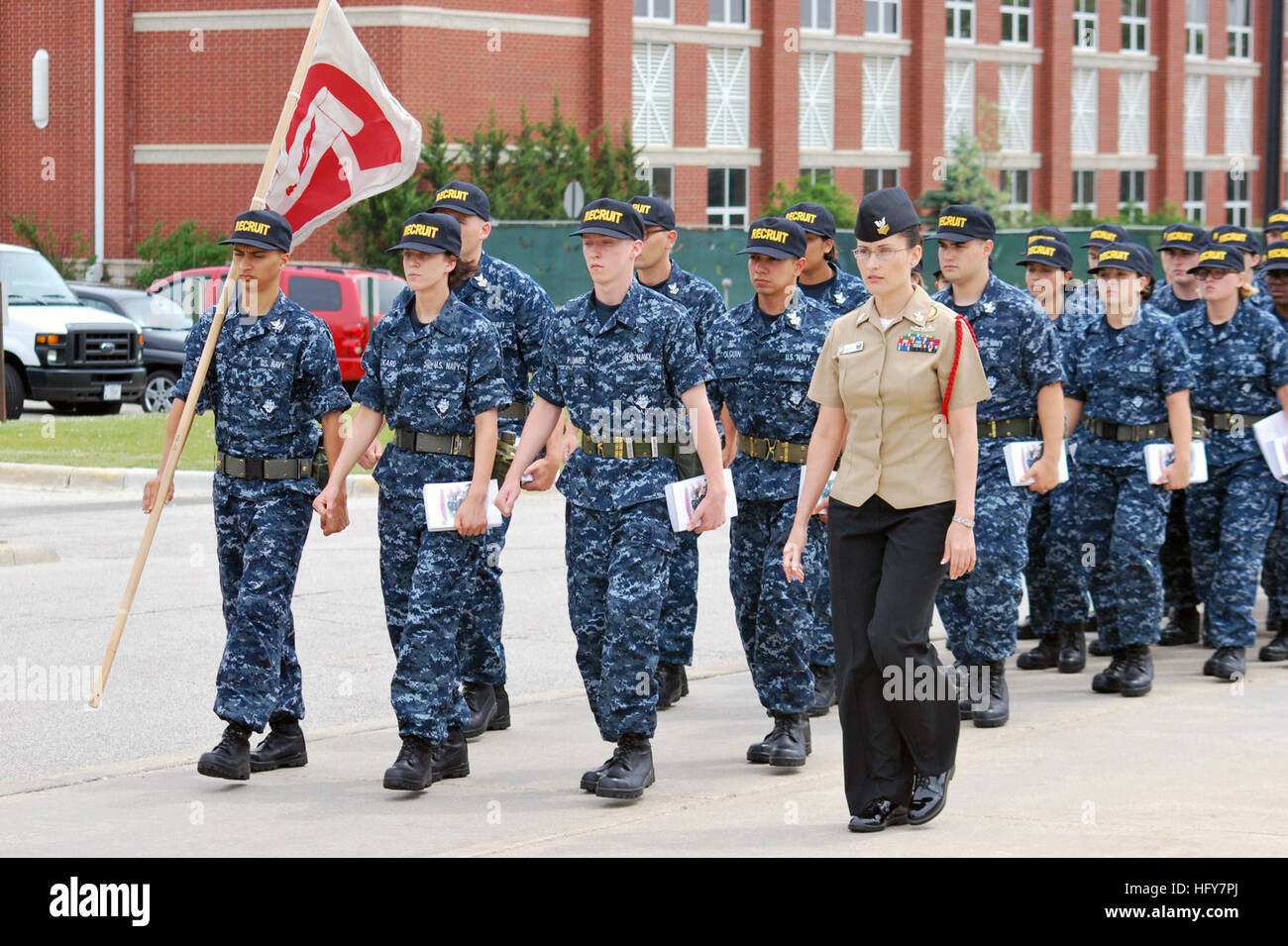Great Lakes Naval Station - 42° 18'36 "N 87° 51'00" W/ 42.31000° N 87.85000° W/ 42.31000; -87.85000 Coordinates: 42° 18'36 "N 87 ° 51'00" W/ 42.31000° N 87.85000° W / 42.31000; -87.85000
Naval Station Great Lakes (NAVSTA Great Lakes) is located in Illinois. He lives at the United States Navy's only training base near North Chicago in Lake County. Recruit Training Command in Major Command; Includes Training Support Cter and Naval Recruiting District Chicago. Naval Station Great Lakes is the largest military installation in Illinois and the Navy's largest training facility. The base is located on 1,628 acres (6.59 km) and has 1,153 buildings.
Great Lakes Naval Station

) and 111 km (69 mi) of roads to access infrastructure. during naval service; It has many different nicknames, including "Quarterdeck of the Navy".
Great Lakes Naval Training Center In Great Lakes, Il, United States
Or worse, "big mistakes". Also referred to as "Second Training Camp" while in Training Support Command.
The base has its own fire department; It runs like a small town with a Naval Security Force (Police) and Civil Service Department.
One of the landmarks of the area is Building 1, also known as the Clock Tower Building. Completed in 1911, the building is made of red brick and has a tower on the third floor of the building. The large weapons yard in front of the administration building is called Ross Field.
In 1996, RTC Great Lakes became the Navy's only basic training facility. 1993 Base Realignment and Closure Commission Naval Training Center San Diego, California and Naval Training Center Orlando; Florida This resulted in the consolidation of their respective recruiting training commands and the United States Navy recruiting training in the Great Lakes. Approximately 40,000 recruits pass through the training command each year, and approximately 7,000 recruits are on-site at any given time. RTC Great Lakes has been active for over 100 years.
North Chicago, Il
TSC Great Lakes is the Navy's primary technical training command. It produces about 16,000 sailors annually. TSC provides the following six learning sites:
Ohio State Hamilton High School Navy Junior ROTC cadets practice marksmanship in the Firearms Training Simulator (FATS).
Culinary Specialist (CS) A-school on December 10, when the school completed its last class. Taught at TSC Great Lakes until 2010. The training was integrated with the US Army parallel program, Virginia, Moved to Fort Lee.

Corpsman (HM) Hospital "A" School moved from Great Lakes. On July 27, 2011, the last class was completed. Their latest class is Class 11–125. The school is the Fort Sam Houston Medical Education and Training Camp; Transferred to Joint Base San Antonio, Texas.
Million Barracks Planned For Naval Station Great Lakes, Boosting Dodge Momentum Index
In addition, All Navy rates complete Apprentice Technical Training (ATT) school, which requires basic electrical knowledge and troubleshooting training. This includes Mineman (MN) and Sonar Technician (Surface) (STG) fees as well as some pre-departure airfare from their respective school locations in San Diego, CA and Psacola, FL. Boatswain's Mates Surface Common Core (SCC) Basic Maintenance Complete Engineering Training and Fees Basic Engineering Common Core (BECC)
Construction was overseen by Admiral Albert R. Ross. Chicago-area architect Jarvis Hunt designed 39 of the original buildings, and Lt. George A. McKay was the civil engineer for the construction of the 172-acre (70 ha) wilderness location.
A budget of $3.5 million ($106 million today) was set aside for construction. President William Howard Taft dedicated the Naval Training Station in 1911.
On July 3, 1911, Joseph Gregg was the first soldier to arrive. He graduated in the top 300 class. Fifty-five years later, on July 5, 1966, he was buried at the Naval Base Cemetery.
Naval Station Great Lakes Lockdown Lifted
Legendary bandleader and marching composer John Philip Sousa was commissioned as a lieutenant in the Navy during World War I. He conducted the Great Lakes Naval Station band from mid-1917 until shortly after the armistice in November 1918. Great Lakes also has a radio school with two 400-foot (120 m) tall towers.
In early 1917, just before the United States entered World War I, Great Lakes was under the command of Captain William A. Moffett, with 39 permanent brick buildings; Over 165 acres (67 hectares) and a crew of about 1,500. By the end of the war, there were 1,200 acres (490 ha) of 776 buildings and about 45,000 sailors in training. There were 125,000 trained in the Great Lakes during the war.
In 1923, the Great Lakes Naval Reserve Air Force Base began operations. After the war, the training of new recruits slowed down and stopped in 1933.

By 1932, Great Lakes had 102 buildings on 507 acres (205 ha). A port was built at a cost of $1 million at the time ($19.9 million today).
National Museum Of The American Sailor
On December 7, 1941, the Japanese attacked Pearl Harbor, and about 6,000 sailors were training in the Great Lakes. This increased to 68,000 within six months. By September 1942, more than 100,000 sailors were training on the Great Lakes. The base grew to 1,600 acres (650 ha) over the next 10 months. By mid-1943 there were over 700 instructors in Class A service schools.
The Navy chose the Great Lakes as the site of the first African-American trainees. June 5, 1942 in Texas. Doreston Luke Carm of Galveston was the first recruit to occupy the isolated training camp at Camp Robert Smalls. In September 1942, segregated "Negro Service Schools" opened. The segregation policy led to small service school classes with only four or five students per class. In 1944, the formation of the Great Lakes was initiated and the entire formation was consolidated by mid-1945. Gold Thirte was commissioned in March 1944 after training in the Great Lakes.
During World War II, about four million men served in the Navy. Over a million sailors were trained on the Great Lakes.
Modern US Naval Artillery School of Glass and Steel; Great Lakes. Skidmore, Owings & Merrill, 1954, referred to Demolished and designed in 2012.
Navy Recruit Boot Camp Great Lakes Illinois Editorial Image
In 1948, a training camp for the WAVES (Women's Recruit) was opened in the Great Lakes, with the first graduates on October 5, 1948. In 1951, training for female recruits began at the United States Naval Training Center in Bainbridge, Maryland, out of Great Lakes.
The Great Lakes was in charge from 1945 until the dissolution of the district on June 30, 1979.
Gunner's Mates in March 1954; Fire Controlm, New facilities at Great Lakes to practice Opticalm and Instrumtm cost $2.2 million ($22.2 million today). 8800 m at that time
Skidmore in the Chicago office of Bruce Graham (formerly Sears Tower and John Hancock Cter.); The Gunnery School, designed by Owings & Merrill, was demolished in 2012 after transitioning from hands-on training to gun-based training. In 2005. In 2008, an effort was made to preserve the structure described as the "Cathedral of the Cathedral".
American Connections Media Outreach: Lakeland Native Supports U.s. Navy Largest Training Center
Beginning in the late 1950s, new barracks; dirt halls, Classrooms and staff offices were built in the Recruit Training Cter at a cost of about $8 million. These facilities served the Navy as a recruit training facility until the late 1990s.
1960 On December 9, the Kangyi Naval Hospital (Building 200H) was dedicated to replace the original hospital 1H building. During the Vietnam War, the hospital treated more than 11,000 patients in its 478,000 square feet (44,400 m).
After moving its services to the Captain James A. Lovell Federal Health Care Center in 2010, the hospital began demolition in January 2013.
After the crash of United Airlines Flight 389 in August 1965, the Great Lakes building was used as a mortuary.
Great Lakes Ns
In the early morning hours of March 11, 1967, Admiral Howard A. Yeager, Commander of the 9th Naval District, died in a fire in the Great Lakes area. Admiral Yeager and the Hospital Corpsman (WAVES) died trying to rescue the Admiral's wife, who was being treated for multiple sclerosis. He also died several days later.
On September 28, 1972, a tornado struck 2 base camp housing areas, injuring 18 people in Great Lakes.
In 1979, violence broke out between sailors and civilians on the Great Lakes north of Chicago. In June 1979, more than 300 brick-wielding sailors protested in North Chicago for at least two consecutive nights after a group of civilians broke into the base and beat a sailor. More than two hundred sailors boarded the fce and headed north of Chicago, where they clashed with local police. On the first night, 16 people were arrested and 5 were injured. On the second night, 16 were arrested by naval authorities and 5 by the police. Also, on the second night of the riot, six sailors and five policemen were injured and a police cruiser overturned. Sailors complained of unfair treatment and harassment in Chicago's northern district, known as the "Strip."

Local officials opposed the proposal. The sixth district, or "strip," was finally bounded indefinitely by the lower commander.
Things To Do Near Great Lakes After Your Sailor's Rtc Graduation
After the mutiny, a total of 58 court-martials were held, in which 19 sailors were found not guilty, and Admiral Thomas L. Malone Jr. indicted Captain Robert D. Colvin, the station commander.
In the days following the June 28, 1979 riot, four men were wanted in connection with the Great Lakes Naval Station robbery.
Great lakes naval station mwr, naval station great lakes housing, great lakes naval air station, naval station great lakes hospital, great lakes naval training station, great lakes naval station lodging, great lakes naval station graduation, naval station great lakes hotels, naval station great lakes, naval station great lakes illinois, great lakes naval station map, naval station great lakes nex
0 Comments